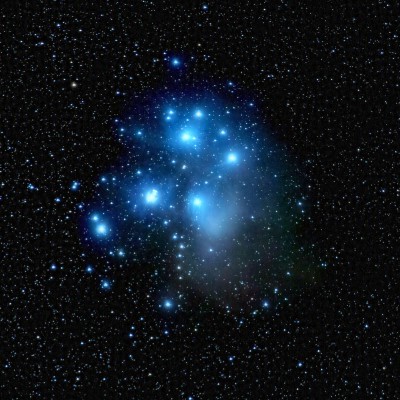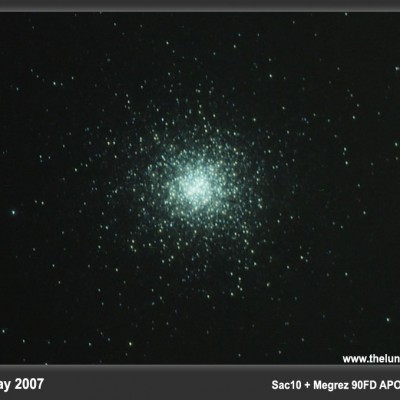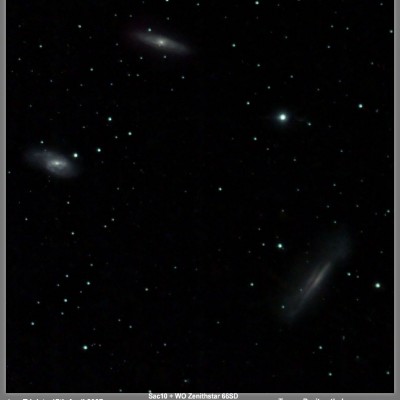It seems to be an age since I was out with the telescope but we finally had a clear night this weekend, albeit one with a high waxing crescent. Despite the moon’s interference I tried managed to capture some detail in the Alnitak region. Sky glow did limit exposure to 120 seconds however  . Even so I was surprised at how much information the 450D managed to capture through the small William Optics refractor but will still revisit this object if we get a clear moonless night before Orion bids us adieu for another year.
. Even so I was surprised at how much information the 450D managed to capture through the small William Optics refractor but will still revisit this object if we get a clear moonless night before Orion bids us adieu for another year.
This is a shot of the area close to Alnitak, the left most of the three bright stars in the constellation of Orion The Hunter. Those three starts are often called “Orion’s Belt” from which the “sword” of the incredible Orion Nebula hangs (I’ve used the Orion Nebula and the Running Man nebula as the backdrop to this website).
The Flame Nebula and the Horsehead Nebula – Click for larger image
The Flame Nebula is an emission (and reflection?) nebula designated as NGC 2024 in the New General Catalog and is situated relatively close by at just over 1000 ly. It’s quite large at 30 arc minutes in width and fairly bright due to the excitement of the gases in the cloud which causes ionised emmissions, the energy for which is provided by radiation from the nearby blue supergiant Alnitak (which is actually a trinary star system), otherwise known as Zeta Orionis. That said it’s nowhere near as bright as it’s cousin, the Greater Orion Nebula. The latter is clearly visible in the smallest of telescopes but I have never managed to see the Flame by visual observation. Notice a bunch of secondary nebula surrounding some of the other brighter stars in the image.
To the right we have another jewel of the sky, Barnard 33 – the Horsehead Nebula. Bet you can see why it’s called the Horsehead. I’ve attached an earlier shot of the Horsehead below taken with a dedicated CCD on a moonless night so you can see more structure. It’s situated in IC434 which is the red veil of nebuloity you can see moving diagonally down from Alnitak. The Horsehead is actually a “Dark Nebula”, in essence a cloud of dark dust that is partially blocking our view of IC434. The cloud just happens to resemble that of a horse’s head, producing a lovely and unusual effect. Another one I’ve never seen visually. Apparently one would require dark skies and a telescope in the region of 20 inches in aperture!!!! The Horsehead nebula is 86 light years from Earth.
The shot of the Flame was made using an ASGT mounted William Optics Megrez 90FD 90mm refractor with a Canon 450D at prime focus. Subs were 120 secods a piece.
The shot of the Horsehead was made using the same setup but with a QHY .6 megapixel CCD camera instead, hence the small size of the image.
All images stacked with Deep Sky Stacker. Post processing in Photoshop.





There are no comments